Bridgitte Jackson-Buckley's Blog, page 4
March 25, 2019
Hi Aljaz,
Hi Aljaz,
I have a specific journal for what I’m doing. Right now, I keep a journal dedicated to reflections and meditation and one dedicated to book/writing ideas. They’re not color coded, but of course that works as well. I just pick a beautiful notebook and whatever is the first thing that comes to mind when I see it is what I use it for. I bought a beautiful sketchbook several months ago. It has rich colors and feels vibrant. When I saw it, I thought of meditation - so that’s what I use it for.
I have two crates of journals.
March 23, 2019
The Practice and Potential of Journaling
 Photo by Aaron Burden on Unsplash
Photo by Aaron Burden on UnsplashI have been writing in journals since I was in the fourth grade.
Now years later, every once in a while, I re-read entries from my elementary, middle and high school years. It is nothing less than comical to read about the petty trivialities which consumed my thoughts. However, it is also refreshing to know that writing was (and continues to be) the invaluable practice through which I cultivated a rich inner world of self-reflection and inquiry through the simple act of writing down my observations, concerns and aspirations in journals.
From childhood journals, travel, pregnancy, gratitude, meditation and daily thought journals, I have gained tremendous insight into my beliefs and emotional patterns — good and not so good.
Journaling has been instrumental in my life.
Here are a few ways the benefits of journaling can be instrumental in your life and possibly lead to unexpected an outcome:
1. Clarify intentionsWhen you use your journal to write down your goals, you can revisit your intentions — your why’s:
Why do you want something?Why are you doing what you’re doing?Why is this the thing you must do beyond other things?2. Witness progress and personal growthIf you make journaling a regular habit, you can see how much progress or growth you’ve made by revisiting previous entries. You can see patterns — behavioral, mental and emotional — to glean insight.
Reading through journal entries provides valuable insight into your thought process and emotional life. You can look back and see how you’ve dealt with important decisions and challenging situations to feel more confident in your ability to do so again.
3. Gain self-confidenceYou can feel proud looking back at the challenges you faced and seeing how far you’ve come.
4. Improve writing and communication skills“Writing, like anything, improves with practice. When you journal every day, you’re practicing the art of writing. And if you use a journal to express your thoughts and ideas, it’ll help improve your overall communication skills.”
5. Reduce negative ruminationWhen things happens that we don’t like, there is a tendency to constantly replay or obsess over negative situations. Even when things go well, we tend to ruminate on the one negative thing that happened.
Rumination rarely offers new insights. It can even make the present situation feel worse. But if you take some time to write out how you’re feeling, it can help you relinquish the attachment to ruminating over what was said or done. Writing down how you feel provides an opportunity for you to be honest with yourself. It provides a safe and private space to reveal something to yourself that you may not be ready to reveal to someone else.
6. MindfulnessIn 2005, during a disturbing turn of events, my husband was hospitalized due to the onset of symptoms for a stroke. He was 33 years-old. In every way imaginable we were unprepared to deal with the long term effects of the challenges that lie ahead. The financial distress, parental responsibility, unexamined emotional wounds, blame, resentment, fear and anger unearthed elements of our psyche that nearly destroyed us and our marriage.
The loss of his ability to work propelled us into the beginning stage of what became the most prolonged and difficult period of our lives. For the next several years, we experienced the devastating loss of our home through foreclosure, ruptured familial relationships, job loss and a steady decline of our marriage.
Throughout this period there were times when I believed myself to be the victim. It wasn’t until I turned to meditation, prayer and journaling to make it through each day and began sincere self-examination, that I was ready to understand the circumstances provided an invitation for growth.
For more than one year, I sat down in a meditative state to ask questions to help me mentally and emotionally navigate the difficult and uncertain times I faced.
During meditation, in addition to periods of silence after prayer, I began to ask questions to solicit clarity and guidance into my awareness. The more I posed questions during a meditative state, I began to notice answers would indeed come into my awareness. However, as soon as the meditation session was over, I forgot the guidance which came into my awareness.
The only way to remember was to write it down. It was at that time I decided to bring a journal to my meditation sessions.
In the midst of this silent struggle, I turned within for at least 20 minutes a day to be able to make it through each day. I continued to meditate and write in my journal. Meditation grew to become the most practical, accessible and effective way I found to calm myself of the anxiety-ridden thoughts that propelled me.
At the time, I had no idea the practice I created around journaling would become my first book almost seven years later.
7. Strengthen memoryEven the simple act of writing something down lets your brain know you want to remember it. That’s why note-taking is such an effective practice when learning something new.
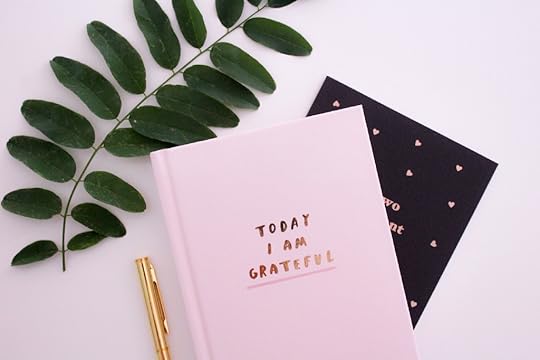 Photo by Gabrielle Henderson on UnsplashHere are a few different types of journaling options to consider:Stream of consciousness:
Photo by Gabrielle Henderson on UnsplashHere are a few different types of journaling options to consider:Stream of consciousness:Write down your thoughts as they happen. The words and thoughts don’t need to make sense, you’re simply capturing your thoughts in action.
I used this with my son when he had difficulty writing a poem for homework. He was so worried about writing the poem that I suggested first writing down everything that was in his mind at the time. He didn’t know what to do with my suggestion as it felt foreign to him. I repeated it at least three times until it was clear — no grammar, spelling or idea concerns, just get the words onto the paper and out of your head to release what’s inside. Afterwards he threw the paper away without letting me looking at it, which was perfectly fine. Then, he was able to relax around the idea of writing the poem. This is similar to Julia Cameron’s exercise The Morning Pages as outlined in The Artists Way.
“Morning Pages are three pages of longhand, stream of consciousness writing, done first thing in the morning. There is no wrong way to do Morning Pages– they are not high art. They are not even “writing.” They are about anything and everything that crosses your mind– and they are for your eyes only. Morning Pages provoke, clarify, comfort, cajole, prioritize and synchronize the day at hand. Do not over-think Morning Pages: just put three pages of anything on the page…and then do three more pages tomorrow.”
Dream journal:This is one of my favorite journaling practices because the dream state offers incredible insight into the subconscious.
“Dreams are one of the few ways we have to see into our unconscious, to understand what is beneath the surface of our limited outer consciousness. The subconscious mind is like a bird high above the road we are traveling, it can see more than our outer mind. The more we learn to recall and understand dreams, the better we understand our deeper motivations, fears, desires, and unconscious knowing. Edgar Cayce once said that nothing occurs in our lives that is not first foreshadowed in our dreams!”
Gratitude journal:Before going to sleep, make a list of everything you were thankful for that day, week, or month.
In Wishes Fulfilled the late Dr. Wayne Dyer wrote about the importance of the last five minutes of the day, just prior to going into a long restful sleep.
“These precious pre-sleep moments can be utilized by either reviewing all of the things in your life which make you unhappy, frustrated and anxious, or they can be used to program your subconscious mind with thoughts of joy, kindness, gratitude and anticipation of having your wishes fulfilled.”
Sketch journal:Express your feelings, thoughts, and ideas through illustrations, doodles, or sketches. Michel Rae Varisco’s artwork is a wonderful example of the healing power of sketch journaling.
Here is an excerpt of Michel’s story:
“In 2011, my husband, Steve Gleason, was diagnosed with ALS. We were both 34. It’s a paralyzing, terminal illness with 2–5 year life expectancy. Yet, with the choice of ventilation (a trache), a person can continue living for years, with 24 hour care.
The months surrounding the ‘trache’ surgery began a period in my life I call ‘the dark ages.’ The grief was relentless. Fear, anxiety, confusion all consumed me. The idea of tomorrow frightened and depressed me. I felt such sadness for the loss of a life that was supposed to be. I felt mental and physical exhaustion, heartbreak, guilt, shame, resentment.
At one point during this time I came across an old sketch pad with a single drawing on it (called One). I brought it along with some pencils to the hospital during one of the surgeries.
There it began.
Drawing provided an escape for the pain. It enabled me to sit in one place for hours and feel contentment and peace for the first time in a long time. And it was exciting that I liked what I was drawing. It felt so good to feel proud of something again. The momentary relief of the crazy mind was exhilarating. My drawings started changing into things I didn’t understand. Like a different language. I feel like what I couldn’t express verbally was coming out of me in these little forms.”
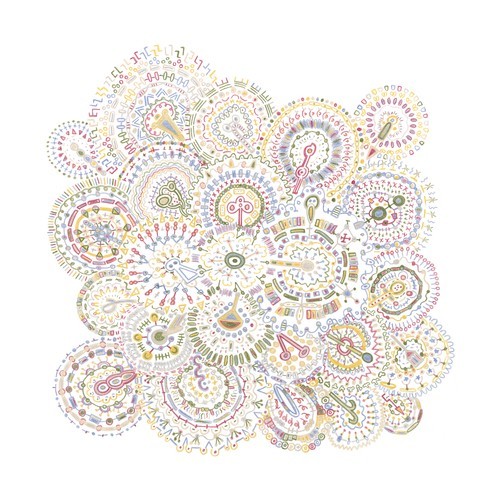 Artwork by Michele Rae Varisco
Artwork by Michele Rae VariscoNo matter which type of journal you decide to keep, there is no right or wrong approach.
The simple act of taking the time to get in touch with your mind, body, and spirit is what’s truly important.
 Helping each other write better.
Join Us
.
Helping each other write better.
Join Us
.
The Practice and Potential of Journaling was originally published in The Writing Cooperative on Medium, where people are continuing the conversation by highlighting and responding to this story.
February 8, 2019
Fire
 Photo Credit:
Jiawei Chen
Photo Credit:
Jiawei Chen
moving within
ready to rise
love
wanting
to make itself known

Fire was originally published in A Cornered Gurl on Medium, where people are continuing the conversation by highlighting and responding to this story.
January 25, 2019
Where Did You Go?
 Photo Credit: Billy Huynh
Photo Credit: Billy HuynhSeveral years ago, my paternal grandmother passed. It was a difficult time. My aunt, with whom I was very close, had just lost her mother and we were both in grief. At this time, my aunt and I spoke on the phone several times a week in an effort to console each other. During one of the conversations, I said to my aunt, “I just wish I knew they were okay.” By “they”, I was referring to both of my grandmothers. It had been 20 years since the passing of my maternal grandmother and I still missed her dearly.
Later that night, following my sincere request to know if my deceased grandmothers were okay, I had a dream that wasn’t really a dream.
In the dream, my maternal grandmother appeared with a cold, white haze around the side of her face. In my glimpse, she looked exactly as I remembered — down to every wrinkle on her face. In her presence, I felt a loving recognition and instant knowing if I opened my eyes to see her I could communicate with her; or if I kept my eyes closed, she would disappear.
Either way the choice was unconditionally mine.
There was no reason to feel afraid of my grandmother. However, I was. I chose to keep my eyes closed and within a split second, her face and the lingering cool air vanished.
That was 15 years ago and I remember it as if it were yesterday.
“Imagine this: life is both physical and non-physical. Those who die, die only for a moment in this reality. In the reality of their consciousness, which persists beyond time, they move to another reality, another world. The other realities, other worlds, are connected to ours. There’s a presence inside us that makes us aware of these other worlds. This presence exists in all realities, all dimensions, along with the people you’ve loved and lost. To experience these other realities, you just have to learn to see with your eyes closed.”
In this in-depth interview with grief educator Christina Rasmussen, author of Where Did You Go? A Life-Changing Journey to Connect with Those We’ve Lost, Rasmussen reveals that we all have the ability to reconnect with our lost loved ones — while accessing a timeless consciousness that can profoundly change our lives here and now.
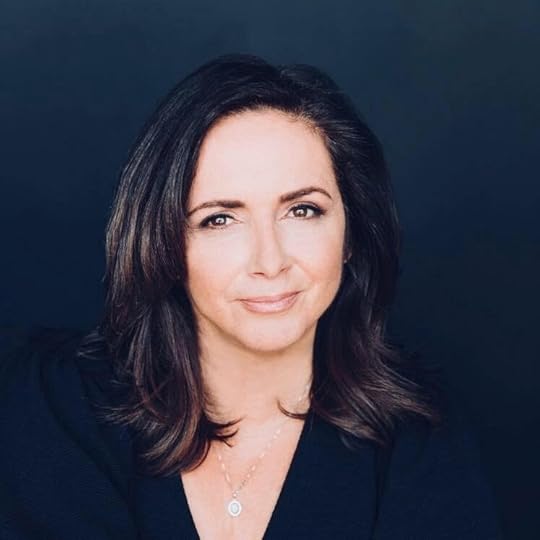
BJB: What was the trajectory of your life prior to the death of your husband?
CR: I was a stay-at-home mom with a master’s degree in counseling psychology from Durham University. My thesis was on the stages of bereavement. I wanted to be a grief counselor.
When my husband was diagnosed in 2003, he was 31 years-old and we had a nine month-old and a two and half year-old.
He was given 6 months to live and everything changed that day — my innocence, my dreams — I wished it was me instead of him. He died three and half years after the diagnosis and that’s when my exploration into life after death began.
BJB: What was your view of death prior to the loss of your husband?
CR: I was afraid of death. I looked at it as something scary and dark. In fact, I was so afraid that I slept with the lights and TV on with my babies beside me for months after he passed.
I grew in up in the Greek Orthodox Church and I do believe in God and the religious sense of it. But when my husband passed, everything I was taught as child was nowhere near enough for me to process what had happened to him.
I had to get myself to the place where I could re-enter my life again, so I slowly started to delve into the world of consciousness after death, neuroscience, quantum physics, alternate realities, stars, black holes, and particle physics — anything that would help me understand a non-religious, non-mystical possibility of life after life.
I wanted to remove the blinders and the fear of connecting with the consciousness of the person I lost.
BJB: In Where Did You Go? you write, “We’re preconditioned to believe that death is real and that nothing exists beyond what we can perceive with our five senses.” However, Robert Lanza frames death in a different way; that the brain filters the person out of our experience because, “When we die, we don’t die. We die to the reality of others.” Can you talk about non-locality and how death takes the body out of time as we know it?
CR: When someone dies, they don’t die to their own awareness they die to our reality — our holographic experience. The projection of their hologram into our reality stopped, but they continue to exist in their deeper reality that is non-local. This non-local reality is also here where we are, but because we are in the 3rd dimension it includes a linear cause and effect experience of time.
When we connect with our loved ones during a dream, or by going on what I call the Temple Journey into the Temple World, we are accessing a place that is outside of time.
Outside of time no one ever dies, we are always alive. That was one of the biggest realizations I made.
BJB: What is the Temple World?
CR: The Temple World is my translation of quantum mechanics and the laws of physics into a visual world, a place to which the brain can more easily travel — the brain otherwise rejects the reality of timeless consciousness and other dimensions because of its “invisibility,” its lack of labels and visual constructs, that it can readily process.
Our brain is our gatekeeper and reality filter; I had to work with it, otherwise it would have been impossible to access these higher levels of consciousness. I used everything we know about how the brain feels fear and reward, how it understands experiences and reality, and used it to access the unseen.
BJB: You write, “When a loved one dies, a door opens between this world and the next. The Doorway is the first journey which encourages the brain to let go of its attachment to its reality, allowing you to move out of your day-to-day reality for the first time.” How is the journey into the Temple World different than visualization?
CR: This is very important. It is the opposite of visualization and a way in which you can let go of this 3rd dimensional reality.
To do this, I had to understand how the brain operates and that its primary purpose is to keep you in this 3rd dimensional reality. It doesn’t want you to go anywhere. The brain will convince you there is no opening to another consciousness, no door, and that there is nothing else here.
The brain likes to label everything to understand.
When it doesn’t understand something it will shut it out and push it away. Here we are helping the brain “to see a door,” as the opening to a higher level of consciousness. This is trying to find some kind of portal to open the gateway. The brain feels safe to take you all the way to the edge, as far as it can go and then your consciousness takes over.
Death is an entering into a higher consciousness and we can access higher consciousness.
BJB: What have people experienced when going through the Temple Journeys?
CR: They experienced their beloveds waiting for them as soon as they walked inside the Temple World. For me this was the biggest surprise of all. The immediacy of that connection. It was as if the consciousness of our loved ones were waiting for us to step inside this higher level of communicating, connecting and creating.
My students also experienced miracles, and moments of synchronicity, but most of all proof that we never die.
BJB: How does communicating with people we’ve lost affect our daily life in a helpful way?
CR: It changes everything. It changes everything about love.
Love transcends time and space. Love continues for us and our loved ones. A soul level healing takes place that frees us from fear and confusion. It helps us to have a greater understanding of our existence in the world in a different way.
When we connect with consciousness that is no longer part of the physical reality we bring back the higher level of insight it carries. So, when we connect with the people we lost, we tap into that next-level awareness that can positively impact our lives to create a more meaningful and joyful experience in this reality. We still experience grief, but we look at death as a higher level of consciousness, not the end.
BJB: Having experienced so much on your spiritual journey, what unanswered questions do you have?
CR: If anything is truly possible and free will is connected to that statement, then what am I not letting? If knowing that anything is possible, then that is the key to unblocking the blocks to believe more in miracles and potentials.
It is understandable that for some it may be difficult to conceptualize a multi-dimensional world.
To most of us, the idea of a multi-dimensional universe and our innate ability to access these higher levels remain in the realm of science fiction. However, the more we examine the intensity of our beliefs, view points and societal conditioning, the more flexible our conscious mind is to examine the finality of life ending “here” — in death.
In understanding and being open to the concept of our consciousness being a match to the multi-dimensionality of the universe, you can move beyond the boundaries of self. Here in this new territory of learning to “see with your eyes closed,” experiencing higher levels of consciousness can become a real experience and not just a concept.
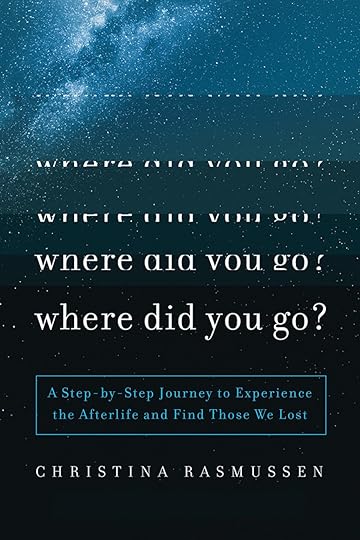

December 17, 2018
When Giving and Receiving Love Feels Uncomfortable
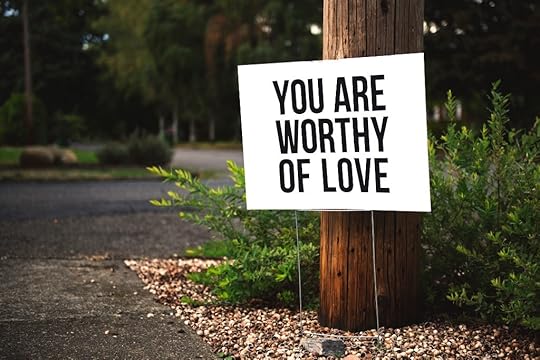 Photo Credit: Tim Mossholder
Photo Credit: Tim MossholderWe’ve all heard it before, “You can’t love others before you learn to love yourself.” While this may sound like a worn out cliché, the truth is, we all know it’s not. Self-love plays a vital role in your relationships with others. Whether it be romantic relationships, professional or friendships, the view you hold of yourself reflects in the quality of your relationships.
“When you treat yourself without respect or love, you give others permission to do the same.”
To understand the role self-love plays in the ability to give and receive love, and foster healthy relationships, I had the opportunity to speak with Dr. Dinorah Nieves, PhD, behavioral scientist, personal development coach and consultant for OWN’s “Iyanla Fix My Life”, and the author of Love You: 12 Ways to Be Who You Love & Love Who You Are and Love You: The Latina Edition.
In our discussion, Dr. Nieves “draws upon her personal experience, counseling women and girls on how to untangle limiting beliefs,” to live healthy, balanced and loving lives.
BJB: What is the biggest internal block to giving and receiving love?
DN: There are two very important pieces to this.
First and foremost, I don’t think people think they’re worthy of love just by being who they are. I think we are well-meaning individuals, who are taught by individuals around us how to be safe and what they believe will keep us safe. But, unfortunately, it means that we don’t always develop our inner voice and we are conditioned, instead to “play it safe” by being what others want. That conditioning keeps us thinking, ‘I have to be this or I have to be that,’ as opposed to thinking, ‘I am already perfect just as I am.’
Being taught to “play it safe” sends the message that we are not necessarily lovable for who we are, but for what we do and that we need to do things differently from how we might want to do them.
So, if you don’t feel worthy of love, then you can’t receive, exchange or emanate love. You can’t live inside of love because love is not a comfort zone for you.
The second piece to this is that love doesn’t feel safe to a lot of people.
Although people seek and crave love, they can’t fully participate in love because they don’t know how to be vulnerable. They don’t trust themselves or others to overcome any challenges presented by emotional attachment. When emotional and romantic love feels so unsafe, there is only partial participation.
BJB: Can you talk about the negative thought patterns, limiting beliefs and fears which contribute to a pattern of on-and-off again romantic relationships?
DN: One thought pattern which contributes to unhealthy relationships is the quest for control.
For example, ideas such as: ‘I have to control things. I can’t be happy if I let go. I have to constantly be in power if I want things to go my way,’ are all built on the belief, ‘The only way I can be safe and happy is if I’m in control.’
People who want to be in control may have had early experiences of feeling unsafe. That is why there is a need to be in control. When we don’t feel safe, there is a need to focus externally on changing other people without an acknowledgment of who the person really is.
That is a real danger for relationships.
BJB: What are the signs a relationship is connected in fear instead of love?
DN: The simple answer is, “Can you breathe?”
You know the difference between a relationship in which you can breathe and one in which you hold your breath. When you feel yourself tensing up in the presence of another human being, there is a lack of health to the relationship that has to be examined.
The more freely you can breathe in the company of another human being, the healthier that relationship will be.
Questions to consider:
Do you respect and admire each other?Do you have a communication style that honors what the other person needs and wants?Can you breakdown in a way that lifts each other up?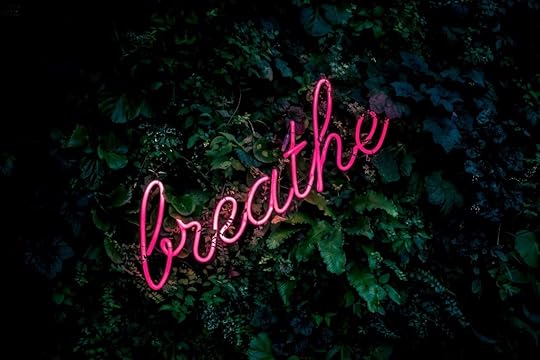 Photo by Fabian Møller
Photo by Fabian MøllerBJB: How can mindfulness bring your attention to negative patterns which contribute to self-sabotaging relationships?
DN: So many of us are on “auto-pilot” all the time. We move through the world reacting to new situations in the same way we reacted to past situations that were similar. There is a reason for that. It’s about safety. We couldn’t move through the world if we didn’t think we had a handle on things.
However, there is also a piece of that which keeps us stuck in our behavioral, thought and feeling patterns. Although many of these habits were developed to respond to something (a threat) that was real before, often such habits are no longer helpful to us. Now that we’ve grown and matured, we’re fundamentally safe in a way we didn’t feel safe in the past.
What keeps us stuck is not looking at the situation in the present. We look at the situation from the past or from the future.
The beauty of mindfulness is that we can train the mind to ask the following:
How does what I’m thinking help me right now?What does this have to do with right now?What do I need right now?How can I use what is going on in my body, my mind and my spirit to help me right now?When you make decisions from this space, you tend to have a cleaner experience. It’s not polluted with reactions you don’t understand, expectations no one has agreed to, and conversations people are not prepared to have.
BJB: How do your thoughts about the disappointment of “not being where you thought you’d be in life” affect social and romantic relationships?
DN: A big piece of unhappiness that people feel toward themselves is from self-judgment.
Through socialization, we learn early on how to judge ourselves. Some piece of the process is helpful because you have to know how to self-assess and understand how your behavior contributes to any situation.
However, you can have an assessment of self without the judgment of self.
Judgment exists in right/wrong, good/bad, and black/white and in the dissonance of who you are and who you want to be. It’s very concrete and also a big piece of why people are afraid of being alone.
They don’t like to be stuck with their self-judgment and subsequent disappointments.
BJB: What’s the difference between loneliness and solitude? Why is there so much fear about being alone?
DN: If we eliminate the self-judgment being alone is a more pleasant experience.
We can be with ourselves in a way that allows us to be aware of what we think, what we want what we need without judging it against who we think we should be. The dissonance keeps us from being able to love ourselves, because we constantly compare the ideal self to the actual self, and it makes being alone too hard, too sad and too frustrating.
When being alone becomes a great space, we raise the bar for who we can be with in a relationship.
BJB: What about someone who feels stuck in a relationship? How can you begin to advocate for yourself and for what you want in life?
DN: One tangible activity you can do is journal all of things that benefit you with no requirement from you.
For example, the sun rises, you receive oxygen from the air, or the cashier has a coupon, etc. It’s a way to focus your consciousness on how much the universe is conspiring in your favor with no requirement from you. That’s an important process because it prompts you to believe in something outside of yourself; something bigger than you.
There is an entire world there to benefit you whether you wake up in a good mood, bad mood, scared or secure.
What keeps you stuck is when you feel you are the one who has to do everything — if you can’t see the way, then the way must not be there. To shift your consciousness to understand that all types of things happen without your effort is very important.
 Photo Credit: Ali Abdul Rahma
Photo Credit: Ali Abdul RahmaIt means you’ll have support, which makes change less scary.
Strategizing to build your sense of self is also important. You can hone in on the following:
Why am I here?What gifts do I have to share with the world?Can I create a plan to begin changing toward my purpose?There are also more difficult questions we must ask of ourselves. They are equally important to address because it’s how we begin to align with the plan.
Why do I tolerate this?Am I victim of the circumstances I’ve created?What benefit do I get from the victim perspective?What is the reward I secretly benefit from perceiving myself as a victim?What is it that I don’t want to admit to myself?It’s important to understand that whenever you are not working to change the life you claim you want to change, it’s usually because you believe that something or someone is holding you back. That puts you in the victim position. There is likely a reward there for you that you may not be comfortable admitting to, even if it’s just the comfort of staying where you are.
Ask yourself, “Is there something I’m getting from this?”
We all have hard times; some harder than others. But there’s a difference between having been through something, and being stuck in something.
If you repeatedly go through the same thing, you’re creating your own crises.
BJB: What has been the most unexpected part of your spiritual and personal growth?
DN: I am happy to admit that I have more to learn, and that I do have more questions than answers. Becoming comfortable with my questions without always needing answers has been one of the most amazing pieces of my growth. I can be with the process of being open to all the blessings I’ve received and the wisdom that comes through me.
“When you are able to recognize that you are not a victim of what you have experienced but that you are actually the creator of all that you have encountered, you will then begin to consciously create more precisely how you want to experience the world. But first, you must be willing to change your perception of yourself and stop judging yourself. When you can eliminate negative comments in your self-talk, the judgment magically disappears.”
Without self-judgment and the belief in your own unworthiness, you can have a deeper experience of loving yourself and others. You can “make each thought, feeling and behavior in your life, consistent and aligned with self-love,” because in the end, the most powerful and transforming force for human beings is love and all love ever wants to do is express itself.
Let’s get on with it.
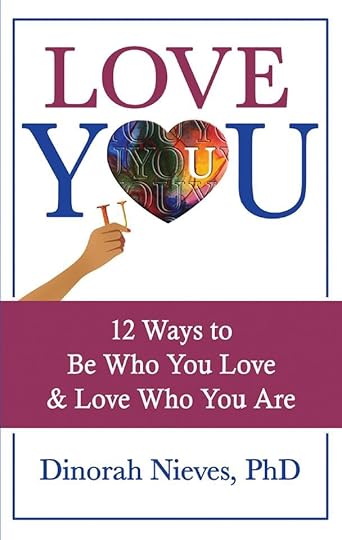

When Giving and Receiving Love Feels Uncomfortable was originally published in P.S. I Love You on Medium, where people are continuing the conversation by highlighting and responding to this story.
November 10, 2018
I couldn’t agree more that we have to trust what we see and what we feel, and that life is much…
I couldn’t agree more that we have to trust what we see and what we feel, and that life is much bigger than it appears. There is a lot we know, but so much we don’t know!!

October 31, 2018
The Destination Is Not The Goal

There are many paths to one destination, and many experiences to be had along the path. Frustration, disappointment and discontent are present when something isn’t what you believe it should be. Even if it isn’t what or how you think it should be, it still is what it is meant to be.
And what happens as a result of it being what it is meant to be? More pruning, more refinement, and more becoming.
There are many paths that lead to one destination, but the destination is not the goal.
The experiences along the path are the goals…the goals that lead to becoming.
Becoming is ongoing, never ending; and because of this, when you finally do reach your “destination”, another will be created.







